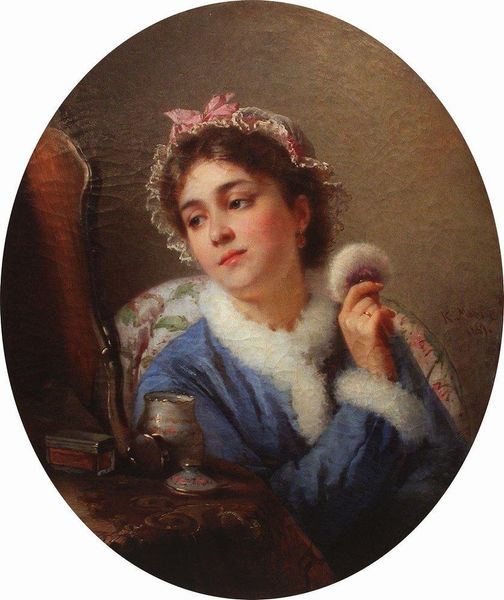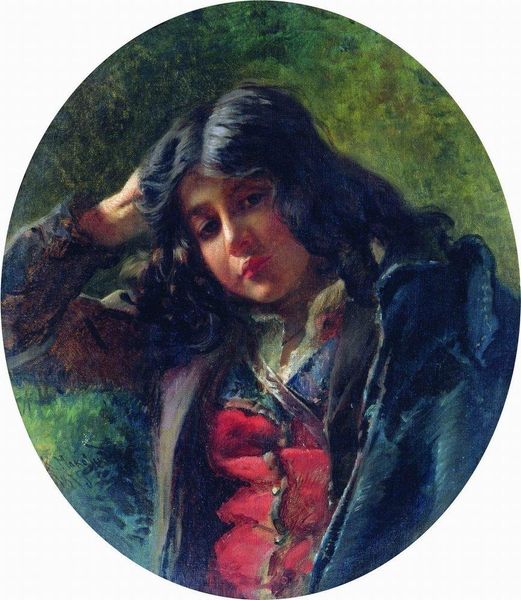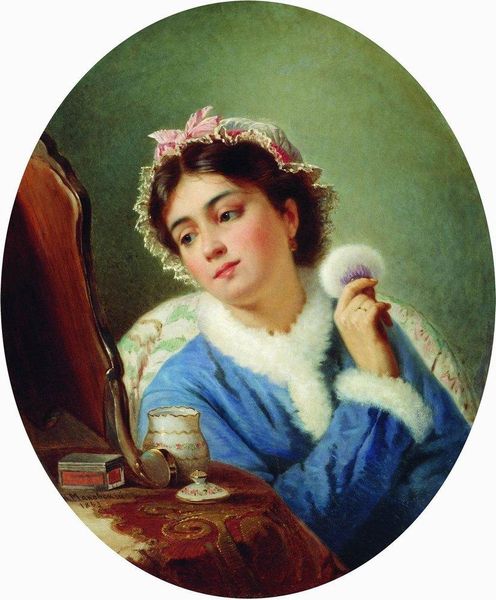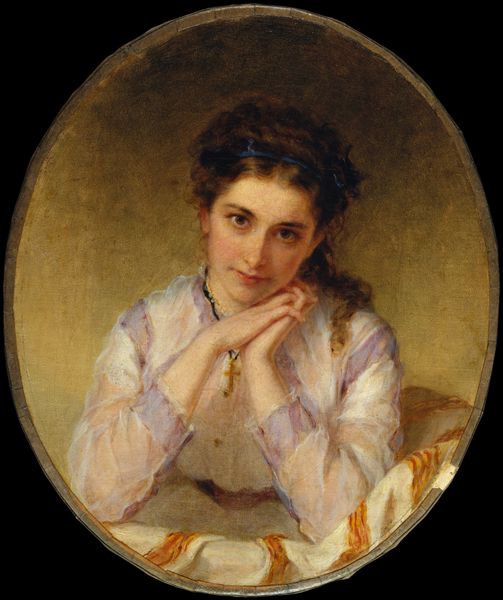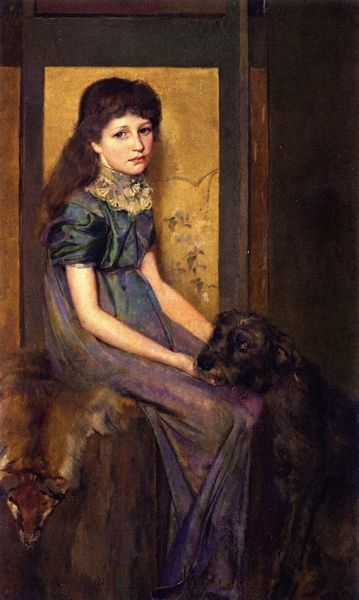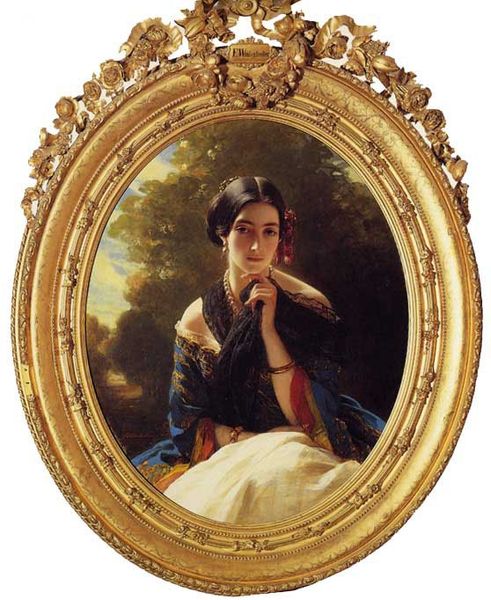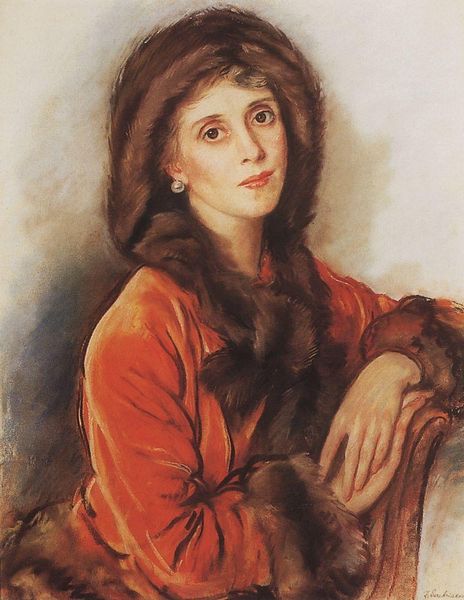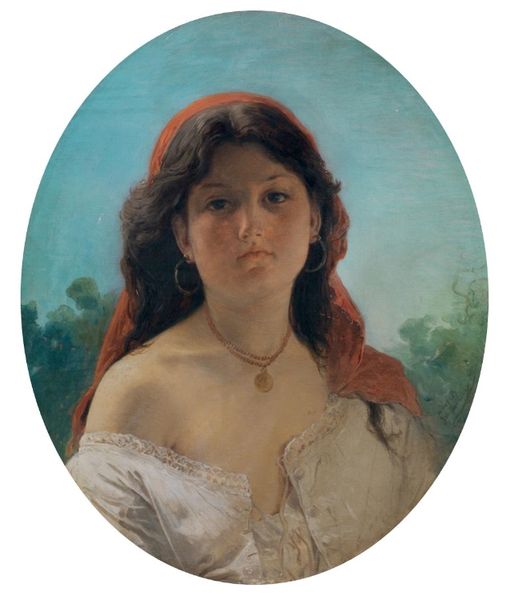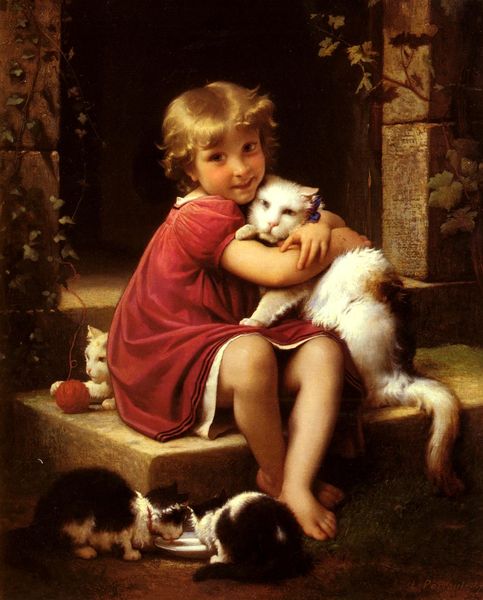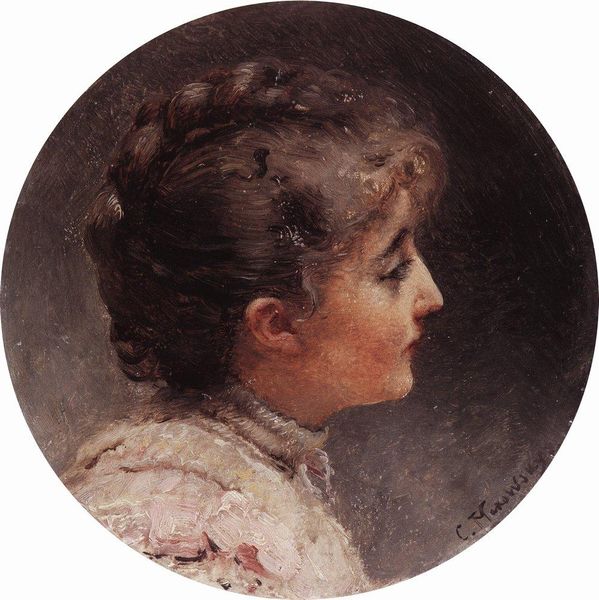
painting, oil-paint
#
portrait
#
painting
#
oil-paint
#
romanticism
#
animal portrait
#
genre-painting
Copyright: Public domain
Editor: So here we have "Girl with Dog," an oil painting by Konstantin Egorovich Makovsky. I'm immediately drawn to the texture in her clothing, it almost looks woven rather than painted, and how that contrasts with her smooth skin. What can you tell me about the materiality of this piece? Curator: Let's consider how the materiality of everyday life seeps into high art here. We see an idealized image, but rendered with materials accessible to the working class. Oil paint was becoming more commercially available, think of the industrial revolution influencing art production. It democratized the creation of portraits, challenging the elite monopoly on representation. How does the artist's choice to use these newly accessible materials change how we perceive the subject? Editor: That's fascinating. I hadn't thought about the social implications of readily available paints. It almost cheapens the “romantic” depiction by bringing it into a more accessible, almost bourgeois realm. Do you think the dog contributes to this idea, like a familiar, domestic prop? Curator: Precisely. The dog acts as a signifier of domesticity and a possible reflection on the conditions that would be required to maintain the scene. Further, explore how the artist handles light. Notice how it illuminates not only her face, but also the worn wood behind them, almost glorifying the roughness of life alongside beauty. It speaks to a broader audience and engages a commercial sensibility. What is your final reading of it now? Editor: Considering the materials and composition together, it really highlights how art is as much about the social context and production means as the final image. The interplay creates more complexity than I initially thought. Thanks! Curator: Exactly. Seeing beyond the surface means acknowledging the labor, materials, and consumption interwoven with even the most seemingly idyllic scenes.
Comments
No comments
Be the first to comment and join the conversation on the ultimate creative platform.
